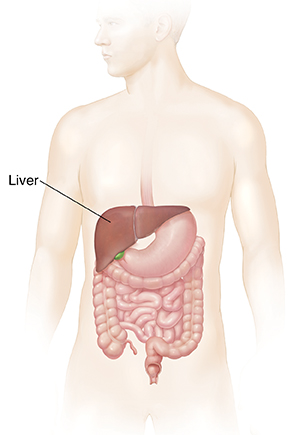Understanding Liver Abscess Treatment
A liver abscess is a pocket of infected fluid (pus) that forms in the liver. It is caused by infection from germs such as bacteria, parasites, or fungus. It must be treated right away to prevent serious problems. It often causes symptoms such as:

Why liver abscess treatment is done
A liver abscess is a severe infection. It can lead to serious problems and cause death. It can harm tissue in the area where it’s found. It can also cause symptoms such as fever, pain, nausea, diarrhea, and loss of appetite. It can cause a severe infection throughout the body called sepsis. Treatment is done to cure the abscess, stop symptoms, and prevent death.
How liver abscess treatment is done
The type of treatment you have depends on what caused the abscess. It also depends on how many abscesses you have, and how big they are. Treatment may include:
-
Taking medicine. An abscess is first treated with antibiotic or antifungal medicine. You will need to take medicine for a few weeks. You may take it by mouth as a pill or liquid. Or the medicine may be put into a vein through an IV (intravenous) tube.
-
Draining the abscess. This may be done in addition to taking medicine. Or it may be done if medicine doesn’t work or the infection causes other problems. There are several ways to drain a liver abscess. The healthcare provider may put a syringe needle through your skin into the abscess. He or she then uses the syringe to drain the fluid. This is called aspiration. Or the provider may put a thin wire through your skin. The provider uses CT scan or ultrasound to help place the wire in the right spot. A thin, flexible tube (catheter) is then placed over the wire and into the abscess. The tube is left in place for 5 to 7 days to drain the fluid. In some cases, surgery may be done to cut into the liver abscess and drain it.
After treatment, you may have follow-up imaging tests of your liver. This is often done by ultrasound, CT scan, or MRI.
Risks of liver abscess treatment
Online Medical Reviewer:
Jen Lehrer MD
Online Medical Reviewer:
L Renee Watson MSN RN
Online Medical Reviewer:
Raymond Turley Jr PA-C
Date Last Reviewed:
1/1/2022
© 2000-2024 The StayWell Company, LLC. All rights reserved. This information is not intended as a substitute for professional medical care. Always follow your healthcare professional's instructions.